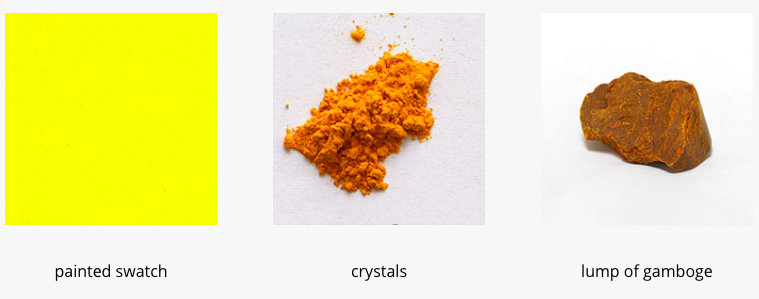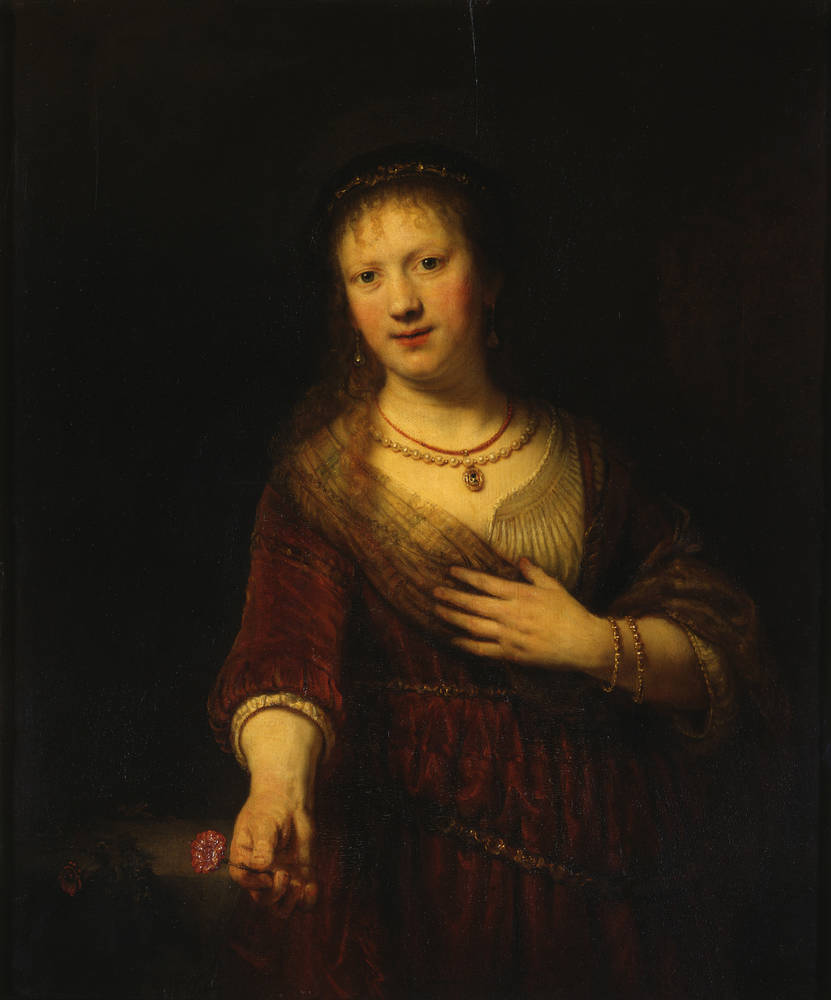Gamboge, A Sunny Yellow with a Deadly Past
Cultural histories of unusual hues.
.
.
.
.
.
.
.
.
.
In the early spring of 1836, a British “hygeist,” as some practitioners of pill-based medicine were called, was found guilty of manslaughter after he advised the deceased, a formerly “stout, healthy man” identified as Captain Mackenzie, to ingest 35 pills of questionable origin. The pills were Morison’s pills—also known as Morison’s Vegetable Pills—and were touted as a miraculous cure-all, good for treating everything from a bum knee (like in Mackenzie’s case) to soreness around the eyes. These deadly capsules were created by one of the most famous charlatans in European history, James Morison. The chief ingredient was gamboge, a powerful laxative and diuretic derived from the sap of deciduous trees found primarily in Cambodia.
Morison’s story is nastily familiar. Like today’s snake oil salesmen (and saleswomen, lest we forget GOOP and Amanda Chantal Bacon), Morison “appealed to the general public because of the missionary-like zeal in which he opposed ‘orthodox’ medicine; in particular, he attacked physicians’ excessive fees and toxic medicine.” He claimed that his vegetable pills, which he began peddling in 1825 at the age of 51, cured 35 years of his own “inexpressible suffering.” But it wasn’t long before these crap laxatives—made from gamboge, aloe, colocynth, cream of tartar, myrrh, and rhubarb—got the good doctor (and his salesmen) in hot water.
According to an article titled “Quacks and Quack Medicines” from The Penny Magazine of the Society for the Diffusion of Useful Knowledge published in 1838, Mackenzie’s death was one of many. In the mid-1800s, nearly a dozen people in Great Britain died after taking large doses of Morison’s pills, and several of these cases wound up in court. Yet, the author notes, “even in the extraordinary annals of quackery it would be difficult to find an instance in which the boldness of ignorance was carried further than in this case.” The poor fellow just wanted to cure his knee, but instead he wound up shitting himself to death.
Gamboge is more than just another example of pharmacological greed gone mad; it’s a sunny yellow, a translucent hue as light and golden as early fall aspen leaves—or the undiluted urine of a fairly healthy person. In her excellent book Colors: A Natural History of the Palette, Victoria Finlay explains that gamboge is “one of the most efficient diuretics that nature knows—put it accidentally in your mouth and you’ll be in the bathroom all day.” Then, somewhat oddly, she points out that many yellow dyes cause bodily purging: “In fact, it is quite a characteristic of things that are vibrating at the yellow resonance, Gourds, unripe pineapple, yellow dock root and yellow flag irises all have the same violently purgative effect. Perhaps it is not a coincidence that Indian Vedic tradition places yellow at the second chakra—the navel, just above the colon.” Although she doesn’t explicitly reference the Doctrine of Signatures—an old school pseudo-religious theory that supposes plants meant to heal certain organs are designed to look like them, walnuts for brains, eyebright for eyes, lungwort for lungs, etc.—but there are shades of that superstition here, too.

Screenshot: colourlex.com
Gamboge first came to Europe in the early 1600s, brought to the western world by the East India Company. The pigment takes its name from Camboja, an old form of the name Cambodia (or, as Cambodians call their country, Kampuchea). According to the British paint manufacturer Winsor & Newton, gamboge has gone by several other names, including rattan, wisteria yellow, gummi gatti, and drop gum. Collecting the pigment is a painfully slow process, similar to maple syrup collection, only far slower and with less comestible results. The sap flows slowly through bamboo shoots inserted into the middle layer of the tree bark, and it drip, drip, drips into a mold. After the sap hardens, you can either pulverize it into a fine yellow dust, or you can apply water directly to the dark brown nuggets (which have the “brittleness of hard toffee” and the “color of dry ear wax,” according to Finlay). The resulting paint is pretty and slightly golden, but it does not last long (it is “not very lightfast”), which makes it hard for art historians to locate examples of gamboge usage. We do know it was used in traditional Chinese painting, and though the hue has long since faded from most pieces, it was a favorite of Flemish painters and can be seen in some Rembrandts.

Rembrandt van Rijn, Saskia van Uylenburgh as Flora, 1641
While in China and much of Asia, yellow is an esteemed and respected hue, the color of both heroism and mourning, European and American cultures tend to view yellow in a darker light. Yellow is a color associated with cowardice (consider the phrase “yellow bellied,” which may refer to either a yellow-feathered bird or the yellow jerseys of an Irish hurling team, depending on who you ask), illness (yellow fever), and dishonesty (yellow press). Someone with a yellow tinge to their skin and a yellow cast to their eyes may be jaundiced—or they could just be a particularly rabid fan of famed serial killer Jeffrey Dahmer, who reportedly adored the color and even wore yellow contacts to trial. In Russian, the phrase “yellow house” is a euphemism for a psychiatric institution (inspired by the yellow-painted Obukhovskaya Hospital in St. Petersburg) and fans of feminist literature will remember the “shouldering unclean yellow” and “sickly sulphur tint” of Charlotte Perkins Gilman’s classic short story The Yellow Wallpaper. Even the word lurid, which goes hand-in-hand with the writings of the yellow press, takes its roots for the Latin luridus, meaning “pale yellow, ghastly, the color of bruises.”

By GAlexandrova – Own work, CC BY-SA 4.0, Link
And unfortunately for the legacy of gamboge, its foul history didn’t end with the death of Morison’s medicinal empire. Art supply shops continued selling gamboge into the 1980s, until it was discovered that this particular batch of pigments had been harvested from a Khmer Rouge killing ground. A 2012 episode of Radiolab (titled “The Perfect Yellow”) relays the story of a Winsor & Newton employee who found bullets lodged in a piece of hardened gamboge while he was breaking up chunks of the material to sell. It was determined that sometime during the slow drip of sap, a bullet had sped through the grove of trees, sticking in the gummy substance. Soon, they had found dozens of bullets in the gamboge.
Reporter Jad Abumrad concludes that something terrible must have happened in that seemingly peaceful forest, and asks Ian Garrett, former technical director of Winsor & Newton whether he feels it is morally acceptable to be selling a substance so obviously polluted by death. “It wasn’t Winsor & Newton that discovered these things,” Garrett replies. “These things were demanded by customers.” After a little bit of hemming and hawing about painters and their role in the world, eventually Abumrad concludes, “Colors are sometimes soaked in blood. That’s just how it is.” Slaughter, manslaughter, and perilous pills—gamboge may be gorgeous to some, but to me it will always be the most deadly yellow.
Katy Kelleher is a writer who lives in Maine with her two dogs and one husband.

